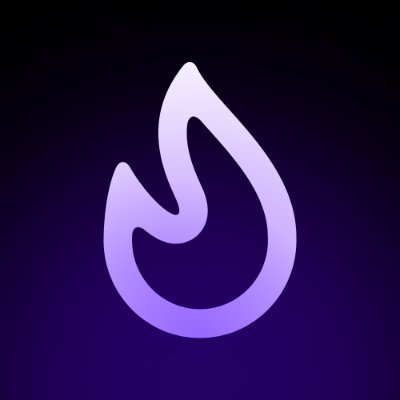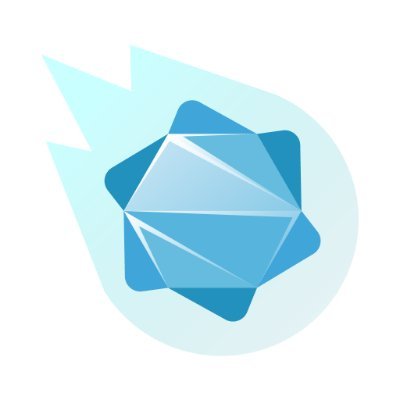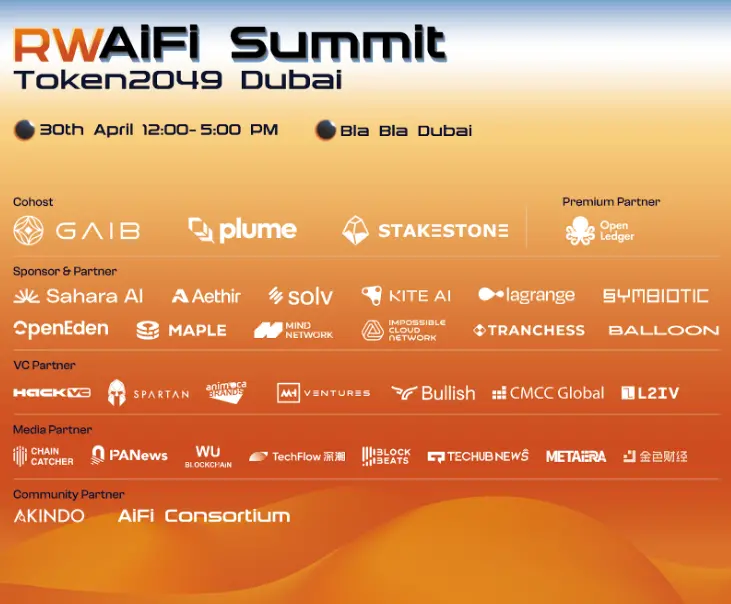LD Capital: Backed by Telegram's TON, exploring the interconnected path between Web2 and Web3
Original Title: "LD Capital: The Open Network: Backed by Telegram, Exploring the Interconnection Between Web2 and Web3"
Written by: Jaden, LD Capital
August 14 marks the 10th anniversary of Telegram, and founder and CEO Pavel Durov stated in the anniversary letter that the next step for Telegram is to go beyond information transmission and lead innovation in social media. Due to its encryption and privacy features, Telegram has become one of the most popular messaging apps.
This year's Telegram Bot craze has also attracted market attention, but Telegram bots only use the Telegram app as an interface for the Ethereum protocol and do not directly operate on the TON chain. The TON chain evolved from the Telegram Open Network blockchain platform. The Telegram Open Network was launched by Telegram in 2017 but had to cease operations due to SEC accusations. Subsequently, the Telegram community spontaneously organized to rename the network to the Open Network (TON) and continued its development and ecological growth. Currently, its network governance token TON has a market value exceeding Polkadot and Polygon, ranking 12th overall and 6th among public chains. Although Telegram is no longer involved in the development of the TON network, the TON network may still gain significant traffic through its association with Telegram, and Telegram bots have brought a paradigm shift in user experience for low-cost, low-barrier entry into Web 3 based on Web 2 applications.
I. Network Framework
The structure of TON is a multi-layer, multi-chain architecture, including the masterchain, workchain, and shardchain. The masterchain acts as a central manager, while workchains support smart contracts and decentralized applications (DApps). Different workchains only need to meet unified interoperability standards, similar to Polkadot. Each workchain implements shardchains to enhance scalability and parallel transaction processing, with each shard responsible for a subset of account types.
The TON network currently adopts a PoS consensus mechanism. There are three roles in the network:
1) Validator nodes: Participate in maintaining network security by staking TON tokens;
2) Fisherman: Detect whether validator nodes have fulfilled their verification tasks by sending invalid proofs; if a validator node is proven to be invalid, it will be penalized.
3) Prover: Verifies the state of the shard and the adjacent shard and sends it to the validator nodes, usually rewarded by the validator nodes.
II. Roadmap
Enhance detection and punishment for non-performing validator nodes.
Create cross-chain bridges connecting Ethereum and BNB Smart Chain.
Allow staking participants to vote on-chain in a full network vote.
Payment will support the establishment of payment channels between any two participants, allowing for an unlimited number of instant micro-payments, free of charge. Only network fees are required when creating and closing channels.
III. Token Situation
After the launch of the Telegram Open Network testnet 2, 5 billion tokens were minted, with 1.45% allocated to developers and testers. However, the SEC soon prohibited Telegram from issuing tokens to investors, and Telegram subsequently ceased work on the TON ecosystem. Testnet 2 tokens were placed in a smart contract. All available Toncoin (TON) tokens are released through mining. These tokens are placed in a special Giver smart contract, allowing anyone to participate in mining, with the mining deadline set for June 28, 2022.
After the initial allocation of tokens ended, TON entered the PoS phase. According to the white paper, the reward tokens for the PoS network are close to 20% of the staked tokens, with an annual inflation rate of about 2%, and the total token supply is expected to double in 35 years. The current total token supply is 5.093 billion, with a circulating supply of 3.441 billion.
Use Cases
Payments: Domain names (DNS), data storage, TON proxies, on-chain gas, cross-chain fees, etc.;
Staking: Maintaining network security; the portion of tokens penalized from validator nodes will be destroyed (specific ratio not disclosed).
Governance.
IV. Network Data
The current number of validator nodes in the Ton network is 343, with a TON token staking amount of 486 million, accounting for 9.5% of the total token supply and 14.12% of the circulating token supply. The amount of tokens destroyed is 41,600. Since January 2022, the number of network accounts and active addresses has shown steady growth, with the current total number of accounts at 3.351 million and active addresses around 765,000, with an average daily transaction volume of 160,000 and approximately 700-900 new on-chain addresses added daily.

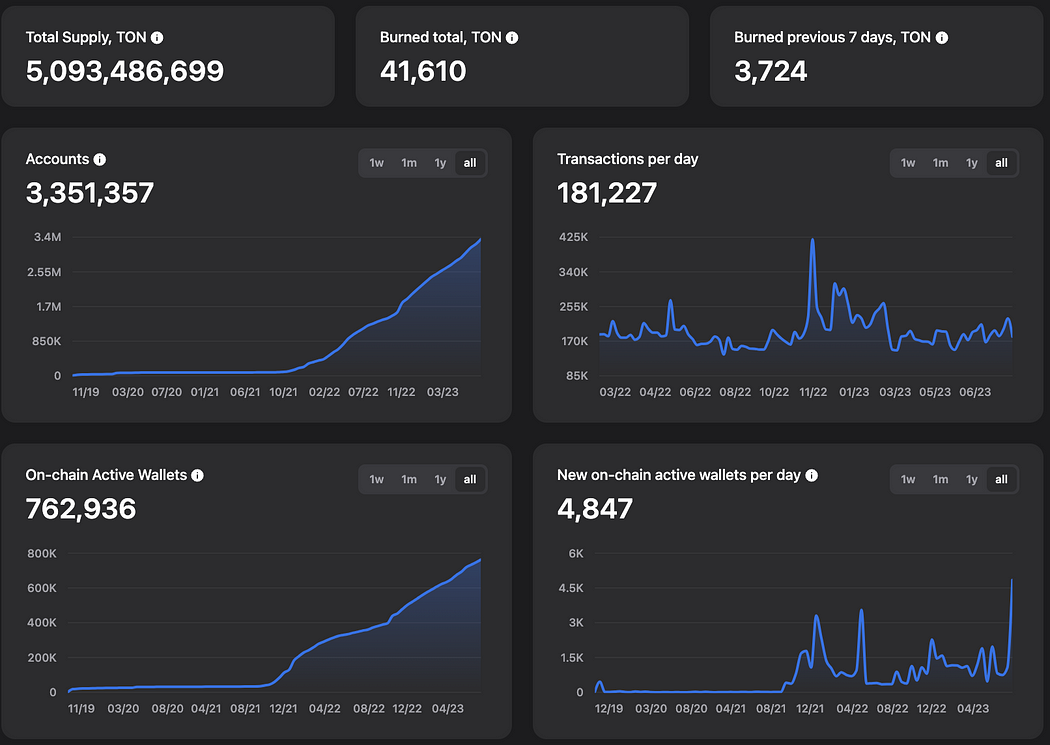
Despite the number of account addresses exceeding 3 million, the Jetto wallet has only 133,000, indicating that only a small number of users are deeply engaged in the Ton ecosystem.
(Note: Jetto is the token standard for the Ton network, and the Jetto wallet is a wallet that includes any Jetto tokens.) The number of minted NFTs is 1.194 million. The number of sold DNS is 32,000 (the number of ENS domain names minted on Ethereum is 2.574 million), with sales amounting to 6.205 million TON, estimated at 10.67 million USD at current prices, with an average price of 333 USD/DNS, which is relatively high.
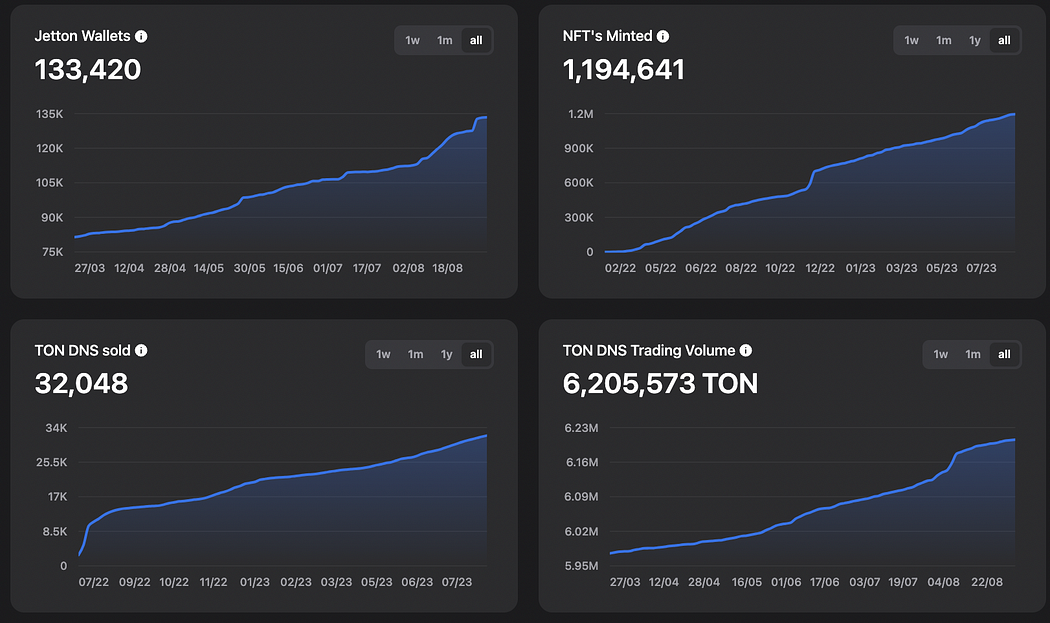
V. Ecosystem
Currently, the TON network ecosystem is led by the TON Foundation, which is 100% community-driven.
Since the beginning of 2023, the main activities of the TON Foundation include:
1) Regular liquidity funding rewards;
2) Universal accelerator program. Launched in May 2023, the accelerator program has a funding amount of 25 million USD. The TON Foundation announced the projects funded in the second and third quarters of 2022 and 2023. According to the report, 31 projects were funded in 2022, 10 projects in the second quarter of 2023, and 5 projects in the third quarter, primarily focused on infrastructure.
3) Development plans for Telegram. The TON Foundation launched the tApps center in August, which includes any app supporting the Telegram ecosystem, and in September launched a web3 Grant program for Telegram, with no specific amount disclosed, but each project is expected to receive between 20,000-50,000 USD.
According to Defillama, the current TVL of TON is 9.85M, with a historical high of only 21.04M, indicating that the TON ecosystem is in a very early development stage.
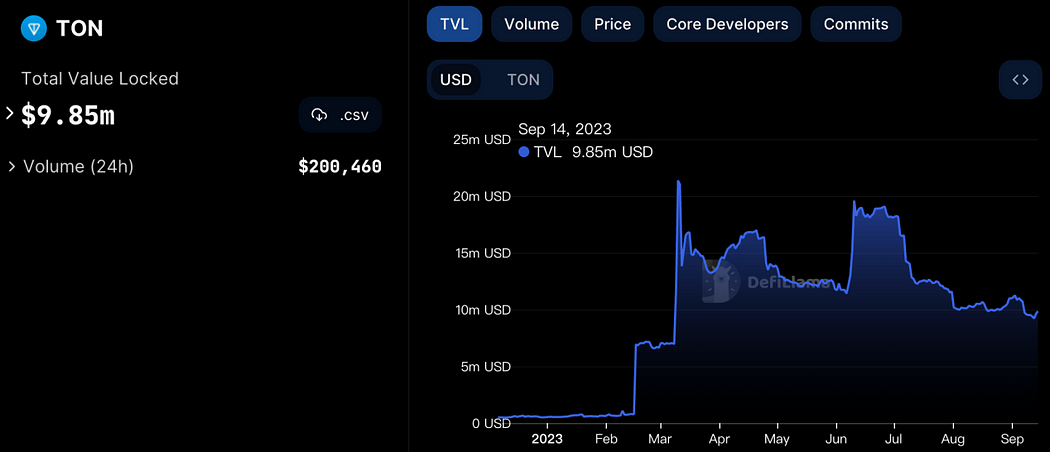
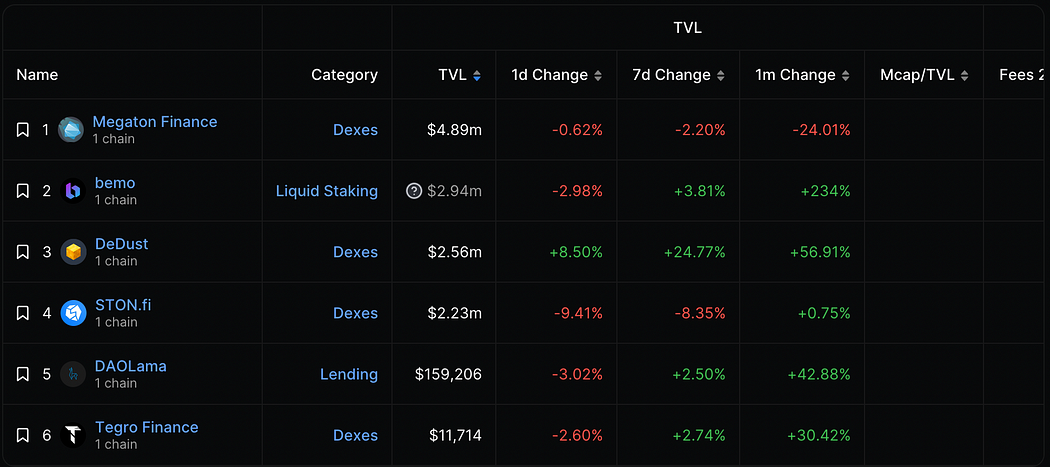
DEX
Megaton Finance
AMM DEX developed by the South Korean blockchain technology company OZYS, originally built on the Klaytn platform as Klayswap. The current TVL has reached 4.89 million USD, accounting for about 50% of TON's TVL, dominating the TON DeFi sector. Megaton Finance raised 1.5 million USD in seed funding in March this year, led by the TONcoin fund, with participation from Cypher Capital, First Stage Labs, Orbs, MEXC Ventures, and others. The project token $MEGA is listed on MEXC, with 54% of tokens allocated to liquidity providers.
DeDust
Developed by Scaleton, now supports almost all available wallets on the TON blockchain. Recently launched DeDust 2.0 version. DeDust DEX currently supports token bridging, allowing users to seamlessly transfer tokens between the TON blockchain and Ethereum using its cross-chain bridge. The current TVL is 2.56M.
STON.fi
AMM DEX. The trading fee is 0.3%, with 0.2% paid to liquidity providers and 0.1% paid to the STON.fi protocol. The current TVL is 2.23M.
Lending
DAOLama
A lending platform using NFTs as collateral, with a current TVL of only 160,000 USD.
NFT Marketplace
TON Diamonds
The main NFT trading market on the TON chain, where ordinary users incur a 5% market fee when trading NFTs on TON Diamonds. However, users can reduce trading fees by purchasing official diamond NFTs of different levels.
Others
Fanzee
A fan participation platform that has raised 2 million USD in pre-seed funding, led by the TON Foundation and First Stage Labs, with other participants including MEXC Global, Huobi Global, KuCoin Exchange, VLG Capital, Orbs, 3Commas.io, and Hexit Capital.
Conclusion
Although the Telegram team is no longer involved in the development of The Open Network, there is still a certain degree of collaboration between the two parties, and The Open Network is actively embracing the Telegram ecosystem. The Open Network is suitable for building on high performance as a cornerstone, using Telegram as a massive traffic entry point, providing low-barrier use cases to gain its core competitive advantage. However, the TON ecosystem is still in a very early stage, with projects primarily focused on infrastructure and lacking innovative and highly playable projects.





